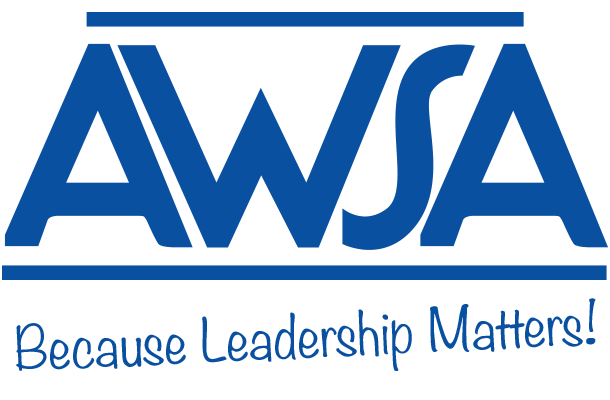Supporting PLC Development by Tending to Adult SEL Competenciesby Maria Dyslin, Principal, Sunset Ridge Elementary DPI has been working to support social emotional learning for students across Wisconsin. (https://dpi.wi.gov/sspw/mental-health/social-emotional-learning). As leaders, we see there is a need to support students by building competencies and teaching students identified lagging skills so that they can thrive in our schools. Although there are many resources available that give guidance on Professional Learning Communities and building collective efficacy it wasn’t until recently that I came across something that encourages us to also support our staff in building their own social emotional competencies. As I came into my school two years ago I was struck by how little we have done as leaders to adequately support people. We have created learning opportunities to learn about the what and why of PLCs and not nearly enough on how to engage effectively in that work. As a result, it is difficult for groups to become teams where they are truly interdependent and working collectively toward common goals. I took the time to observe and notice I learned a lot! I noticed that even in teams where they had spent time creating agendas and meeting roles the actual work they engaged in remained adult centered and implementation was procedural. As Inquired I realized staff did not yet have solid conceptual understanding about what PLCs actually are nor did they demonstrate the relational trust to be able to productively engage in cognitive dissonance and productive conflict. Bruce Tuckman came up with a model representing the different phases groups need to go through to grow as a team. The model initially consisted of four distinct stages of group formation: forming, storming, norming and performing. Later, a fifth stage was added, called ‘adjourning’ or ‘mourning’. They represent the necessary and inevitable stages from facing challenges, tackling problems, finding solutions and planning work to ultimately delivering results as a team.As all stages have their own focus, they also correspond to a different set of feelings, behaviours and group tasks. According to Tuckman, raising awareness about the different stages and why things are happening in certain ways could positively influence the team’s process and productivity. Forming
The team is formed and everyone shows their best behavior. There is a positive and polite atmosphere. Strong guidance is needed by the facilitator as group tasks are not clearly defined yet.
Storming
Emerging boundaries become contested and conflicts occur. Also frustration with the lack of progress is common. Guidance is needed by the facilitator.
Norming
Team members start to resolve their differences, appreciate colleagues' strengths, and respect the leader’s authority. Behavior from the storming and norming phases can overlap for some time when new tasks come up.
Performing
Hard work goes hand in hand with satisfaction about the team’s progress. Team confidence makes team roles more fluid and more tasks can be delegated by the facilitator. Problems are prevented or solved as they pop up.
I have found mentors that are giving me some insight into how I can better build skills that will facilitate teams to reaching performing. Thinking Collaborative offers us methods, principles and strategies for creating spaces where open, honest and courageous work can grow. The Norms of Collaboration transformed my ability to navigate and support groups. We have spent time as a staff learning about the ways of listening, the power of paraphrasing and the distinction between discussion and dialogue. This is also where I learned about the SCARF model. The SCARF model (Rock, 2008) is a summary of important discoveries from neuroscience about the way people interact socially. The model is built on three central ideas:
The SCARF model involves five domains of human social experience: Status, Certainty, Autonomy, Relatedness and Fairness. Status is about relative importance to others. These five domains activate either the 'primary reward' or 'primary threat' circuitry (and associated networks) of the brain. For example, a perceived threat to one's status activates similar brain networks to a threat to one's life. In the same way, a perceived increase in fairness activates the same reward circuitry as receiving a monetary reward. The model enables us to more easily remember, recognize, and potentially modify the core social domains that drive human behavior. Most recently Elena Aguilar’s Onward: Cultivating Emotional Resilience in Educators has really pushed me to think more deeply about SEL competencies in adults. Elena tells us “The most important thing to know about emotional intelligence is this: It is a set of learned abilities. We can learn to understand our emotions, and we can acquire strategies to respond to them that leave us feeling happier, stronger, healthier, and more connected to others...When teachers face a lot of stress and get very little support to manage it, they can respond in maladaptive ways. Furthermore, the create climates of stress in their classrooms that in turn negatively impact their students.” (p56 Onward, 2018) If you think about all of the new learning we have about how the brain works it just seems natural that we use that to inform how we support students based on what we observe. In addition to this, I also think about how that informs us in building adult social emotional competencies which leads to how they serve students, how they interact with families and impacts how they function with colleagues in teams. Maria Dyslin is the Principal of Sunset Ridge Elementary in the Middleton-Cross Plains Area School District. She will be presenting at the 2019 Elementary Principals Convention taking place from October 9-11, 2019 at the Kalahari Resort in the Wisconsin Dells.
Read more at:
Elementary Edition - Secondary Edition - District Level Edition
|
